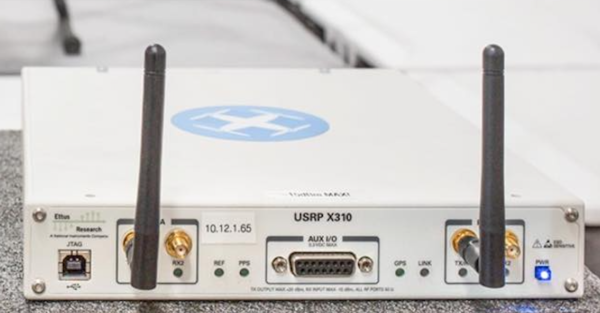
Communications and signal processing technologies play a critical role in military operations, and keeping up with such technologies is a must in the aerospace and defence industry. Among these, Software-Defined Radios (SDRs) have emerged as a game-changing technology, offering unparalleled flexibility, adaptability, and resilience in the field. As modern warfare increasingly relies on secure and efficient communication, SDRs provide armed forces with a crucial advantage, ensuring reliable and adaptable connectivity across various operational scenarios.
This article explores the fundamental role of SDRs in military applications, their key benefits, and the future of SDR technology in defence systems.
What Are Software-Defined Radios (SDRs)?
Software-Defined Radios (SDRs) are advanced radio communication systems that use software to process signals instead of relying on traditional hardware components. Unlike conventional radios, which operate on fixed frequencies and waveforms, SDRs can be dynamically reprogrammed, allowing military forces to adjust their communication strategies in real-time.
How SDRs Work
SDRs consist of three primary components:
- RF Hardware: Converts analog signals into digital data and vice versa.
- Digital Signal Processor (DSP): Processes the signal in software, enabling real-time modulation and demodulation.
- Software Interface: Allows operators to modify and reconfigure radio parameters based on mission needs.
By leveraging these capabilities, military forces can ensure secure, efficient, and adaptable communication across multiple operational environments.
Key Advantages of SDRs in Military Operations
1.Enhanced Interoperability
Modern military forces operate in joint and coalition environments, requiring seamless communication between different branches and allied nations. SDRs eliminate compatibility issues by supporting multiple communication protocols and frequency bands, facilitating real-time information exchange across diverse platforms.
2.Secure and Adaptive Communication
One of the most critical aspects of military communication is security. SDRs employ advanced encryption algorithms and frequency-hopping techniques, making them highly resistant to jamming, eavesdropping, and cyber threats. Additionally, SDRs can dynamically shift frequencies to avoid interference, ensuring continuous connectivity.
3.Real-Time Signal Intelligence (SIGINT) and Electronic Warfare (EW)
Military operations heavily rely on signal intelligence (SIGINT) and electronic warfare (EW) capabilities to detect, analyze, and counter enemy communications. SDRs can rapidly scan multiple frequencies, intercept signals, and adapt to evolving battlefield conditions, providing a significant strategic advantage.
4.Cost-Effective and Scalable
Traditional hardware-based radios require frequent upgrades and replacements, leading to high costs and logistical challenges. SDRs, on the other hand, offer a scalable and cost-efficient solution by allowing software updates to introduce new features and functionalities without the need for extensive hardware modifications.
5.Integration with AI and Machine Learning
As artificial intelligence (AI) and machine learning (ML) technologies advance, SDRs are becoming smarter. AI-driven SDRs can autonomously detect interference, optimize signal processing, and even predict potential communication threats, enhancing operational efficiency and decision-making.
Applications of SDRs in Military Operations
1.Tactical Communication Networks
SDRs enable secure and mission-critical communications between ground forces, naval units, and aerial platforms. Their ability to operate on different frequency bands ensures uninterrupted connectivity in complex environments.
2.UAV and Drone Communication
Unmanned aerial vehicles (UAVs) rely on SDRs for real-time data transmission and remote control operations. SDRs enhance drone communication security and enable seamless integration with various military networks.
3.Battlefield Awareness and Reconnaissance
By intercepting enemy signals and analyzing radio frequency (RF) patterns, SDRs contribute to enhanced battlefield awareness, providing military forces with actionable intelligence in real-time.
4.Anti-Jamming and Electronic Countermeasures
SDRs play a crucial role in electronic warfare (EW) by detecting and countering enemy jamming attempts. Their adaptability ensures continued operational effectiveness in contested environments.
5.Space and Satellite Communications
Military satellite communication systems leverage SDRs to ensure secure, high-speed, and interference-resistant data transmission, critical for global defense operations.
The Future of SDRs in Military Technology
As military operations become increasingly network-centric, SDR technology is expected to evolve further. Key trends shaping the future of SDRs include:
- 5G and Beyond: The integration of SDRs with next-generation wireless technologies will enhance battlefield connectivity and responsiveness.
- AI-Powered Signal Processing: AI-driven automation will enable SDRs to detect, analyze, and counter threats in real-time.
- Quantum-Resistant Encryption: Future SDRs will incorporate quantum-safe cryptographic protocols to safeguard military communications from emerging cyber threats.
- Miniaturization and Portability: Advancements in microelectronics will lead to compact, lightweight SDR systems, enhancing deployment flexibility.
Conclusion
Software-Defined Radios (SDRs) have revolutionized military communication by providing secure, adaptive, and interoperable solutions for modern warfare. Their ability to dynamically reconfigure frequencies, resist electronic threats, and integrate with emerging technologies makes them an essential component of defense strategies worldwide.
As technology continues to evolve, SDRs will play an even more critical role in shaping the future of military operations, ensuring that armed forces remain connected, secure, and mission-ready in any combat scenario.
Stay ahead in modern military technology with SAAB RDS—explore how SDRs can enhance your defence capabilities today!
Frequently Asked Questions (FAQ)
- What makes SDRs different from traditional radios?
Unlike traditional radios that rely on fixed hardware configurations, SDRs use software to process signals, allowing for greater flexibility, upgradability, and adaptability.
- How do SDRs improve military communication?
SDRs enhance military communication by providing secure, interference-resistant, and multi-band connectivity, ensuring seamless interoperability across various defence platforms.
- Are SDRs secure against cyber threats?
Yes, SDRs employ advanced encryption, frequency-hopping techniques, and AI-driven threat detection, making them highly resistant to cyber attacks and jamming.
- Can SDRs be updated with new features?
Yes, software updates allow SDRs to receive new capabilities, eliminating the need for costly hardware replacements and ensuring long-term usability.
- What are the main challenges of implementing SDRs in military applications?
Challenges include power consumption, signal interference, and integration with existing defence infrastructure. However, ongoing advancements in AI and miniaturization are addressing these concerns.
- What is the future of SDR technology in defence?
The future of SDRs includes AI-powered signal processing, 5G integration, quantum-resistant encryption, and enhanced electronic warfare capabilities, ensuring superior communication and operational efficiency.
By leveraging SDR technology, modern military forces can enhance battlefield communication, improve situational awareness, and maintain a strategic edge in defence operations.
